Managing cards without corner indices
For many hundreds of years cards had no corner indices, were square cut and mostly made from card without the smooth, slippery surfaces we enjoy today.
I have long been intrigued by the extent to which the codified rules of card games written in the 19th century and earlier usually run to many pages relating to mistakes or errors in the play of the cards. Much emphasis is given to what happens when players drop cards on the floor, expose cards during play, revoke by playing the wrong suit, lead from the wrong hand, lead out of turn and so on. This is usually justified by reference to the fact that most games were played for gambling purposes and thus it was important to know what the likely problems were and how they should be dealt with when they occur. An entirely reasonable explanation.
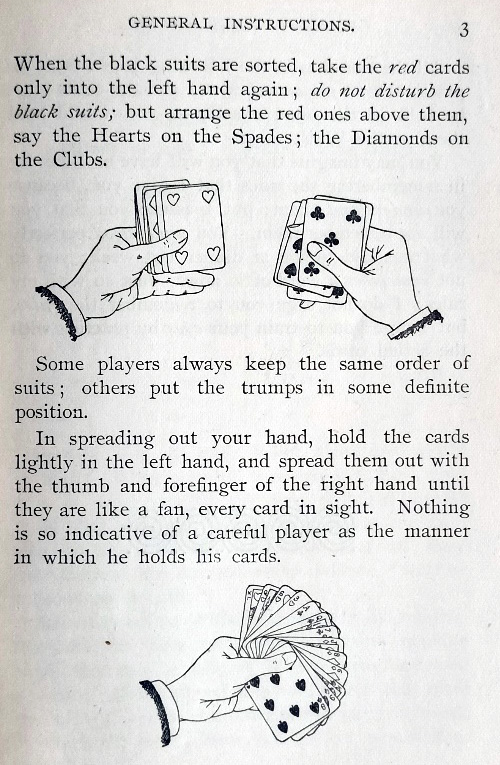
Above: excerpt from Foster’s Whist Manual, published in 1890.
On reflection, however, I suggest that this is only part of the story. It wasn’t until the fourth quarter of the 19th century that corner indices on playing cards became standard practice. For many hundreds of years before this, cards had no corner indices, were square cut and most were made from card without the smooth, slippery surfaces we enjoy today. As a result, the problems of creating a fan, or managing the handling and play of cards by each player must have been a nightmare. Cards must have been constantly handled and moved about by each player in order to establish their holding and in order to decide which card to play next. Add to this the fact that for most of card-playing history, evening play had to be conducted in candlelight and, later on, with the limitations of gas lighting. Under the circumstances the chances of dropping or exposing cards, or revoking (by not following suit or trumping incorrectly) must have been commonplace. Hence the need for the rules to determine appropriate ways of resolving these problems when they occurred.
I have been scouring the literature but have (so far) been unable to track down any pre-1870 advice on how to hold a hand of 13 cards to best advantage. Most treatises concentrate on first leads and play rather than how to hold the cards. My best efforts so far have only found this page from Foster’s Whist Manual, but this was published in 1890, long after corner indices were in widespread use. However, it is interesting to note that barely 15 years after the introduction of corner indices, Foster deems it unnecessary to refer to earlier card designs without this facility.
My guess is that if you were dealt the hand shown below at whist or bridge you would feel reasonably happy as the game got underway:
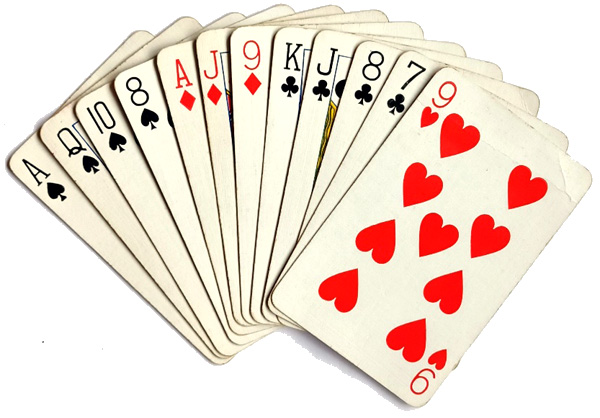
How would you feel if you were faced with the same hand in this form?
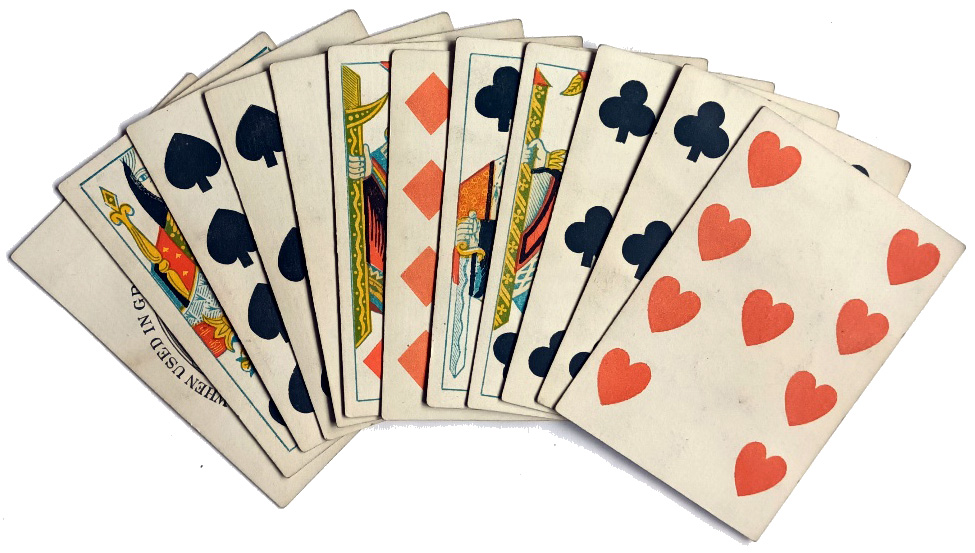
There would have to be an inevitable movement of cards from hand to hand to establish the holding and get the suits and cards in the right position. Thereafter careful examination of the cards would be necessary before each play. Little wonder that mistakes happened, cards were dropped or revokes occurred.
Simon Wintle in his excellent article “Fanning the Playing Cards” points out that “A glance through playing card books showing early prints of card players does not always suggest that neatly fanning the cards was the norm.” He examples “a print of The Duke and Duchess of Bavaria playing at cards” in the 16th century in which “the two aristocrats are shown holding their cards one just above the other, in a single pile.” He cites other examples of how cards were not necessarily fanned in order to hold the cards and play them. In most of these pictures, it must be said, players are holding a relatively small number of cards, not the 13 required for whist.
But let’s see if this helps. I have identified three different ways of holding 13 cards without using the classic fan.
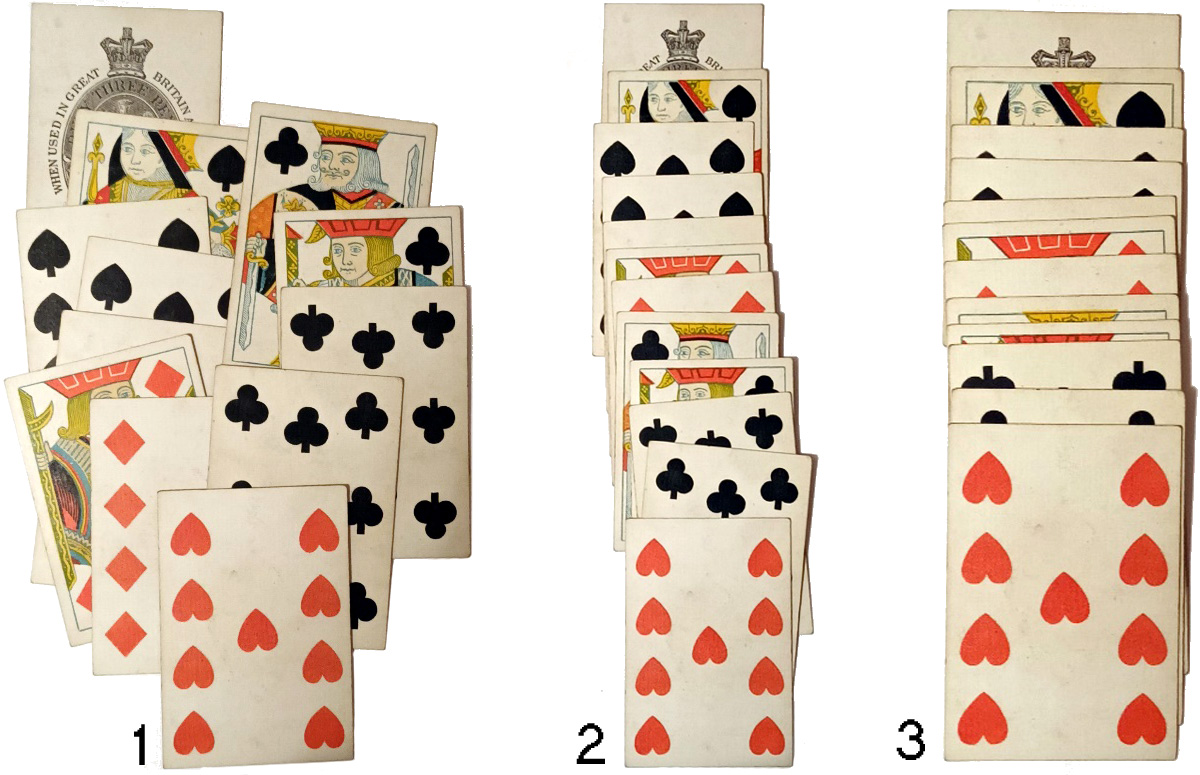
Example one would be just about capable of being held in one hand but although the picture cards are revealed, it otherwise doesn’t immediately appear to offer greater clarity of the holding without further examination and possible fumbling. Example two, likewise.
Example three offers a tighter holding and could be condensed further so that the cards could be examined by using the other hand in the manner of the old flip top books.
However, as far as I can see, however one holds a hand of 13 cards without corner indices, the basic problem is the same. It is impossible to manage the holding accurately without an immense amount of movement of the cards in order to identify the quality of the cards held and to select the appropriate card to play. I have consulted a number of card-playing friends, including an international bridge player, and the consensus is that handling such cards and playing them would inevitably at best lead to delays in play; at worse, to mistakes in handling and card selection.
Obviously, this is less of a problem in games which require many fewer cards, but for the most popular game for several hundred years – whist – the problem was perennial.
It is not surprising, therefore, that once packs with corner indices were available, their use rapidly spread from the clubs to domestic players and the card producing companies had a field day in coping with the huge demand for the new and revolutionary product. The only surprise is that such an obvious change in design was so long in coming as now it seems so screamingly obvious!
There are discussions elsewhere on this site about the origins of corner indices. It took a while before the English card producers followed the example of the American originator. But by 1874 Goodall & Son were able to use corner indices on court and pip cards under the Duplex registered name and all card producers followed suit (no pun intended). By the 1890s Goodalls employed over 1000 people and produced two and a half million packs a year. My guess is that card play in the clubs and at home became far less subject to mistakes in card handling and play as a result.
References
M. H. Goodall, The Family & the Firm, 1820 – 1922, p.17.
By Tony Hall
United Kingdom • Member since January 30, 2015
I started my interest in card games about 70 years ago, playing cribbage with my grandfather. Collecting card game materials started 50 years or so later, when time permitted. One cribbage board was a memory; two became the start of a collection currently exceeding 150!
Once interest in the social history of card games was sparked, I bought a wooden whist marker from the 1880s which was ingenious in design and unbelievably tactile. One lead to two and there was no stopping.
What happened thereafter is reflected in my articles and downloads on this site, for which I will be eternally grateful.

Related Articles
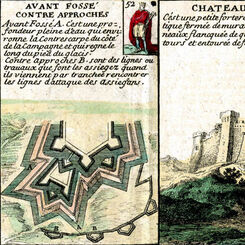
Le Jeu Des Fortifications
An innovation from the time of Louis XIV by Gilles de la Boissière.
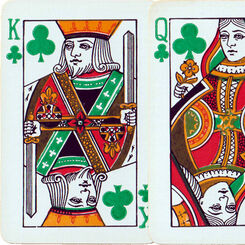
Revokno playing cards
No-revoke pack from the Irish company Ormond, with clubs in green and diamonds in orange.

76: Transitions: Hunt & Sons
Styles change and technology develops. This means that it's possible to see transition periods in th...

English Pattern by B.P. Grimaud
Standard English pattern published by B.P. Grimaud with engraving by F. Simon, c.1880.
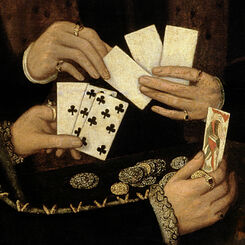
Why our playing-cards look the way they do
Analysis of early playing card designs: origins, suit differences, standardization, technological ad...
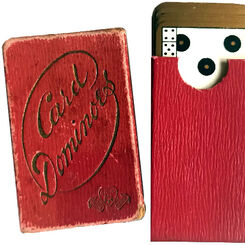
Miniature Card Dominoes
A miniature set of Goodall domino cards (5.9 x 3.5 cms) still in perfect condition.

Foster’s Self-Playing Whist Cards
In 1890 R. F. Foster published the first edition of “Foster’s Whist Manual” which was to become the ...
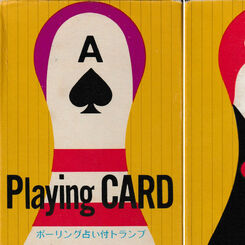
Fan DACK Playing CARD
Unusual cards in the shape of skittles, intended for fanning.
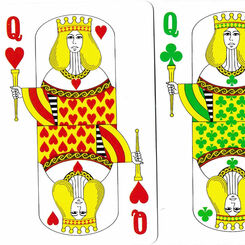
Adventure Fours
Adventure Fours playing cards with differently coloured suit symbols, USA 1977

A. Dougherty’s Triplicate Recreation
A recreated of the original 1876, No. 18, Triplicate deck by A. Dougherty by Michael Scott in 2014. ...
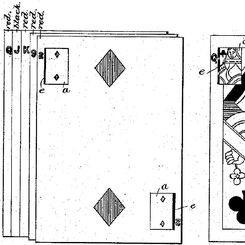
Corner Indices
Corner Indices were a major innovation in playing card production.

Protea Bridge 999
Bridge size deck with non-standard suit colours, blue diamonds & green clubs, manufactured by Protea...
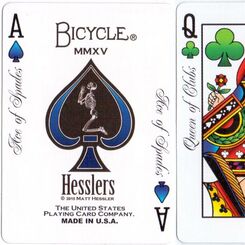
Hesslers Enhanced
Matt Hessler’s “Enhanced” four-colour playing cards, 2015.
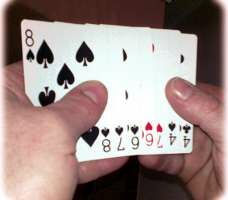
Fanning the Playing Cards
The manner of holding the cards in the hand is related to a player’s needs to view his/her hand in a...

33: Functional Changes to Playing Cards
The emphasis throughout my collecting has been on the design of the courts cards, and it should be p...

Triplicate No.18
Dougherty first secured a patent for “Triplicates” in 1876, a novel type of indices with a miniature...
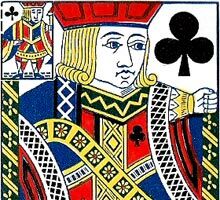
Ivorette
Dougherty was at the forefront of innovation, adding Best Bowers and then Jokers, rounded corners an...

Arpak
The Arpak No-Revoke playing cards, 24 Mount Pleasant, Liverpool, c.1927-35.

De La Rue
De La Rue introduced letter-press printing into playing card production and his patent was granted i...
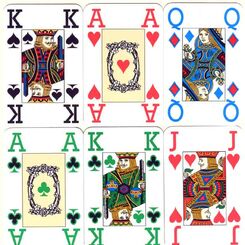
John Newman’s Colour Cards
John Newman’s Colour Cards
Most Popular
Our top articles from the past 60 days






















